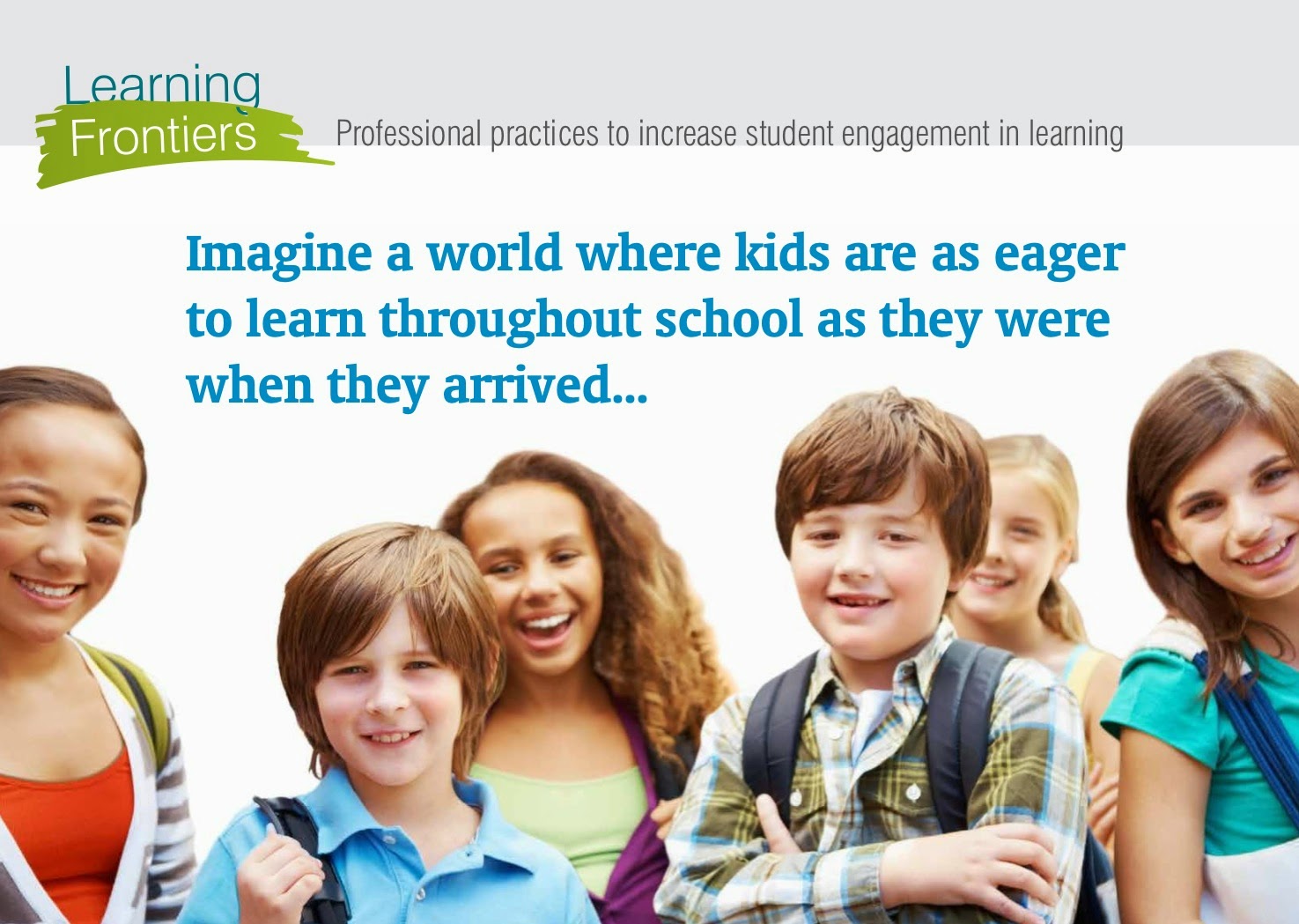"We keep doing things the way they have always been done and expect different outcomes. If the current climate suggests that we aren't getting the results we want, obviously there is a need for a fundamental shift in the way we do things.
We know that learning takes place when it is tailored; tailored to the diverse needs of our students. Why then do we continue to educate in environments that lack any real flexibility, with bell times and physical environments designed to ensure structure and protect the standardisation of learning?"
Year 11 - 12 teacher, Independent school QLD, published online in 'Case for change', AITSL 2013.
In 2013 AITSL and the Learning Frontiers initiative asked some pertinent questions about student engagement to the Australian educational community. These 'big' questions I'm sure, were designed to provoke a new wave of action amongst educators, and many of these already understand clearly why 'schooling' must change, adapt to cater for the 21st learner and engage all students.
It all started with a conversation, as many things do, on Twitter, email and the web, and this was a vital first step in co-constructing what I will call the guide to leading innovative change in education, from your current school. This is where I got involved, curious about the potential to provoke meaningful change, boost student engagement and educational attainment at the school in which I work. The question of 'why change' was already answered; as meaningful engagement in learning has a positive lifelong impact on individuals(1). I wanted to know 'how' this could be accomplished.
So I put in an expression of interest for our school, Gungahlin College in the ACT, and hoped for the best. We were very pleased to find out this year that ourselves and Amaroo School would become the lab sites for the ACT/Regional Design hub. It has been fantastic learning experience ever since. Our two lab site teams travelled to the AITSL offices in Melbourne, we met up with other teams from the Melbourne and Brisbane hubs for a two day intensive workshop. It was a fantastic and challenging two days with the passionate Learning Frontiers team from AITSL, Valerie Hannon and David Price. During the two days we were tasked with developing four exploratory questions which addressed each of the Learning Frontiers high level design principles for engaging learning.
How does completely open and shared learning lead to engagement of all stakeholders? (Co-created)
How do we empower students to become active agents in their learning? (Personalised)
How can student learning result in valuable products and services? (Connected)
How can we harness the power student’s social contexts to deeply engage them in learning? (Integrated)
It was at the first Design Hub meeting in Canberra for the ACT/Regional hub that I felt the collective power of the hub. The meeting consisted of teams of teachers, school leaders, parent and student representatives , both government and non-government from Albury, Snowy Mountains, Wagga and Canberra. It was becoming clear that we would be working together to co-construct change for ourselves and our students in their respective contexts. The four design Principles and the four questions that explore them are like chapters in our own 'how to guide 'to changing school for the better. The process of 'hubbing' (now a verb) also becomes a 'Change School' in itself as our respective school communities work together to fill in the detail of each chapter in the 'how to guide' going forward.
If you are interested in becoming involved in this exciting initiative please visit the Learning Frontiers website for more information.
References:
1. Fredericks, et al. (2004); Hattie (2009) cited in the Background paper: Engagement in Australian schools



